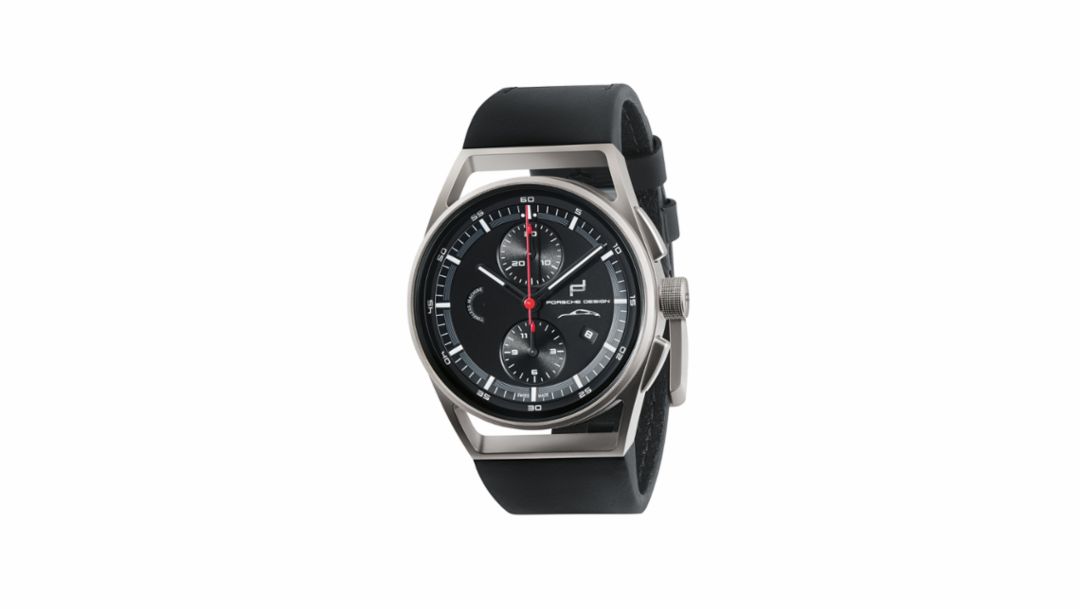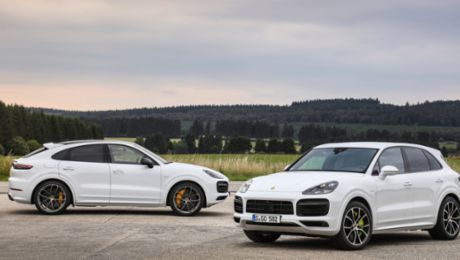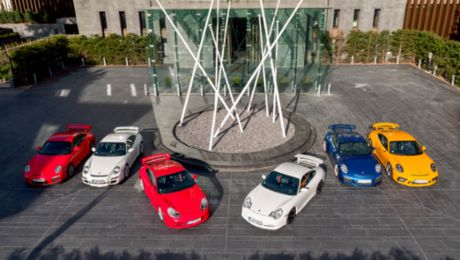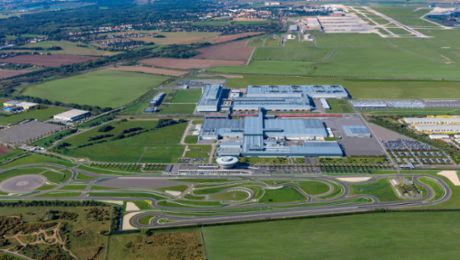Faster, Porsche presented the 8th generation of the 911 in Petree Hall at the Los Angeles Auto Show. “California is the ideal place to introduce the new 911. California has been like a second home to Porsche for decades,” comments Oliver Blume, CEO of Porsche AG. “The 8th generation of the 911 is even more powerful, even more emotional, and even more efficient than its predecessor – and also offers extensive digital features. And in spite of all the innovations, the 911 is still just what it has always been, a pure sports car and the pulsing heart of Porsche: our icon.”
Unmistakably committed to the Porsche design DNA, sporting a much more muscular look and an interior featuring a 10.9-inch touchscreen monitor, the new 911 is timeless – and also modern. Intelligent control and chassis elements as well as innovative assistance systems combine the masterfully uncompromising driving dynamics for which the classic rear-engine sports car is famous, with the demands of the digital world.
The next generation of twin-turbocharged flat-six engines has been further developed and is more powerful than ever before, offering 443 hp in the S models. The efficiency of the powertrain has been optimized by an improved injection process as well as a new layout for the turbochargers and charge air cooling system. The engine is mated to a new eight-speed PDK (Porsche Doppelkupplung) dual-clutch transmission. A manual transmission will be available at a later date. The top track speeds are now 191 mph (Carrera S) and 190 mph for the Carrera 4S all-wheel-drive version. Additional highlights include the standard Porsche Wet Mode, an innovative world first designed to make driving on wet roads even safer and optional Night Vision Assist with a thermal imaging camera.
Detlev von Platen, Member of the Executive Board for Sales and Marketing at Porsche AG, emphasized the importance of the North American market for the sports car manufacturer: “U.S. customers purchased more than 55,000 Porsches in 2017, and the American importer and distributor Porsche Cars North America is on track to achieve a new record figure in 2018. Ultimately, no model better symbolizes the American love affair with Porsche than the 911. One in three Porsche 911s built in Zuffenhausen goes to the USA.”
The next generation of flat-six engines
The turbocharged flat-six engines also enter a new generation with the new 911. The primary focus of advanced development here was on further enhancing performance. New, larger turbochargers with a symmetrical layout and electrically controlled wastegate valves, a completely redesigned charge air cooling system, and use for the first time of piezo fuel injectors all improve the engine in key areas: responsiveness, power, torque characteristic, endurance and its free-revving nature. The enhanced engines make 443 horsepower at 6,500 rpm, 23 hp more than the previous model. The maximum torque of 390 lb-ft (22 lb-ft up from the previous model) is available within a wide powerband from 2,300 to 5,000 rpm.
The 2020 911 Carrera S has a base MSRP of $113,200, while the 2020 911 Carrera 4S will start at $120,600, each not including the delivery, processing and handling fee of $1,050. The new models can be ordered now and are expected to reach U.S. dealers in Summer 2019.
The Porsche 911 mythology, right on the wrist
Porsche Design is honoring the new generation of the 911 with a special-edition watch limited to 911 pieces: the “911 Chronograph Timeless Machine Limited Edition.” The unmistakable design of the automotive icon is reflected in the puristic design of this timepiece and the contours of the titanium housing. Even the generously dimensioned black dial is derived from its motorized forerunner. The white pointers and indicators guarantee maximum readability both in the cockpit and on the wrist. The totalizator at 6 o’clock references the sports car icon with the markings at 3/6/9 and 11. The same is true for the silhouette of the 911 on the dial, and the strap that is produced using genuine Porsche interior leather. The special edition watch will be available from April 2019 in an exclusively boxed edition which also includes a special limitation badge.
The masterpiece from Zuffenhausen – seven past generations of an icon
A legend was born at the International Motor Show Germany (IAA) in Frankfurt. September 12, 1963: Porsche presented the highly anticipated successor to the 356 – a sports car had started the car manufacturer’s brand history in Gmünd, Austria some 15 years prior. 111,995 examples of the original 911 – initially called the 901 – were built before the model was discontinued.
Ten years later, in 1973, the G series 911 launched with fundamental changes. Many of these became necessary because of stricter safety requirements around the world. Porsche relied on powerful turbo engines and a galvanized body in its top model, additionally launching a Cabriolet version of the 911 and the Speedster, alongside the Targa. 198,496 Porsche 911 G Series cars were built up to 1989.
Its successor, referred to internally as type 964, was first shown in 1988. The first model variants of the 964 generation show just how advanced the new 911 was: all-wheel drive was introduced to the series for the first time on the Carrera 4, with Porsche having originally designed it for the 959 high-performance sports car. The 911 Carrera 2 with rear-wheel drive followed in 1989. Along with the Coupé, the Cabriolet and Targa versions also celebrated their debut at the same time. 85% of the 964 was made from newly designed parts. 63,762 third-generation Porsche 911s were produced within six years.
The fourth generation of the 911 – the type 993 – is today considered one of the most desirable editions. Initially, Porsche offered it only as a Coupé and Cabriolet. The Targa made its debut in 1995, incorporating a new concept: instead of a removable folding roof panel, it had a glass roof with a large surface area, which could be retracted under the rear window. The era of air-cooled engines also ended in 1998 after the production of 68,881 vehicles.
With the fifth generation of the 911, Porsche switched to water-cooled engines. The type 996 represents the biggest departure in this classic’s family tree. The company was in a state of financial upheaval. After 34 years, the sports car manufacturer comprehensively realigned its icon with the 996 generation. The focus was on reducing production costs by ensuring the greatest possible compatibility of parts with other models such as the new Boxster (986), and updated safety and emissions features. Production ended in 2005. With 175,262 units sold, the 996 is the long-underestimated success model up to that point in the history of the 911.
From 2004, the type 997 Porsche 911 became more multifaceted than ever: customers could choose from a Coupé or Targa, Cabriolet or Speedster, rear- or all-wheel-drive, narrow or wider body, with water-cooled naturally aspirated and turbo engines, a GTS or the GT2, GT2 RS or GT3 derivatives, or either of two GT3 RS models. Including special models, the range had a total of 24 model variants – supplemented by a wide range of personalization options. With 213,004 vehicles built, the sixth generation of the 911 again hit a new production record.
From 2011, the 991 embodies the highest development stage of the Porsche 911 to date. It is an extraordinary reflection of this sports car manufacturer’s leitmotif: striving for the best possible efficiency. This can be seen in all aspects, starting with its evolved design. A more compact silhouette, tension-charged surfaces, and precisely defined details mean the 991 looks more powerful than any other previous 911 – an effect heightened by the wider track and the wheelbase that was extended by ten centimeters. It also features adaptive aerodynamics: the 911 is the first series sports car from Porsche to adopt these from the 918 Spyder hybrid supercar. The 991 generation of the 911 is the absolute best seller in the history of this icon. 217,930 of them were built by October 31, 2018. In total, Porsche has produced 1,049,330 series 911s since its debut in 1963.



.jpg/jcr:content/2020%20Macan%20Turbo%20%20(3).jpg)


